#1 IMPACT.
No one gives a flying fig about the advertising you are about to create.
No one turns on a device or opens a paper to read an advertisement.
No one wakes up hoping to ‘have a conversation’ with a loo roll brand. Or any other brand for that matter.
If you always remember you are a tick, an annoyance, a dust particle in the eye of consumer getting in the way of their daily life, then you’re starting from the right place.
If you think in this way then hopefully the first thing you will get right is getting the consumer’s attention. You may have a very interesting message to share but if you don’t get your viewer’s attention, you’ve failed.
So how do you get their attention? The are many ways. You can be bold, you can intrigue you can amuse. But however you do it, it starts with respect for the consumer and you knowing your place. As the very clever Howard Gossage said, “People don’t read adverts. They read what intrigues them, and sometimes that’s an advert.”
Here is an ad that I’ve created, Volkswagen
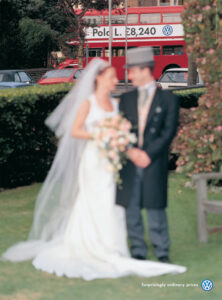
#2 RELEVANCE
Bill Bernbach said “Be provocative. But be sure your provocativeness stems from your product. You are NOT right if in your ad you stand a man on his head JUST to get attention. You ARE right if you have him on his head to show how your product keeps things from falling out of his pockets.”
You can’t expect the viewer to remember your brand if the drama you create doesn’t have a simple, logical link back to your brand.
It’s dead easy to put something provocative out there but without that link, it’s a waste of money. But with a strong link, you can go off into whole different worlds and styles because all roads lead back to the product.
I had the good fortune to work on Marmite which has a simple, powerful human truth about it. Since Love & Hate was conceived by Flintham (loves) & McLeod (hates) in the late 90s, there has been a multitude of different executions. But all underpinned by that simple, powerful truth. Here’s one I wrote with Clive Pickering.
My old pal Richard Russel created Maltesers The lighter way to enjoy chocolate. Every ad featured people enjoying the product in a way that was uniquely Maltesers.
It’s a shame to see how they have lost that focus. The current crop of ads could be for any brand so will be much harder for the viewer to attribute to Maltesers.
Over recent years I have had the good fortune to work on ASICS. Here is a brand founded on another truth – That exercise is not just beneficial for physical heath but for mental health too. We have expressed this in many different ways but each time we are clearly banging the same drum.

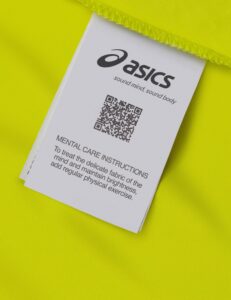
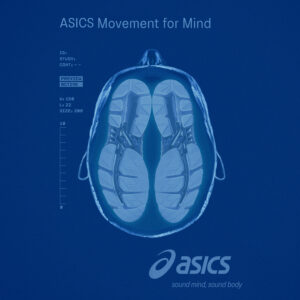
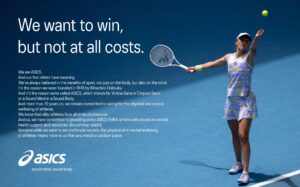
#3 Creative from a tight brief.
So, the brief arrives on your desk. You have a read. You start to smile.
The client had made sacrifices in terms of messaging and the strategist had not embellished it with puns or tried to write a headline as a proposition. Nothing loosey-goosey because that’s when you end up with a turkey.
Simply – The joyous freedom of a tight brief.
As a creative, if you were lucky enough to receive a single-minded brief you were duty-bound to do it justice. Every idea one presents might appear quite different from the next, but all should pepper the same strategic target.
Back in the day, I had the good fortune to work on Volkswagen UK. The first brief we worked on was for the price campaign. The obstacle that needed to be overcome was that VWs were more expensive than their competitors.
The solution was to talk about value. And what surprising value a VW was. Out of that brief came the ‘Surprisingly Ordinary Prices’ campaign. Many different ads, conceived from different creatives ran on a variety of different media. But all underpinned by the same thought. It became VW’s most successful campaign of all time.
Here are a few I had a hand in creating.
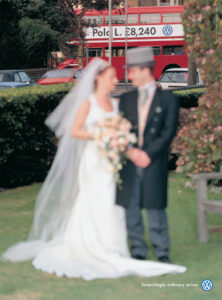
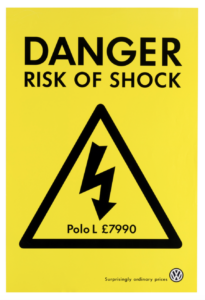
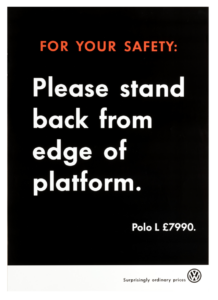
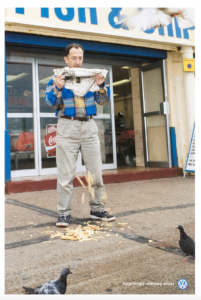
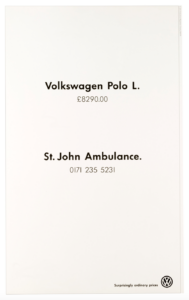
#4 Creative with rewatchability
Creative that can be viewed again and again does more than inform, it makes an emotional connection.
If it makes an emotional connection, it will be more memorable.
I learnt much of what makes great advertising at BMPDDB. John Webster was still there and the department was chock full of great creative talent.
The competition was fierce but fare.
A good deal of time was spent getting the briefs right so when you attended your review it was vital your ideas hit that brief head on. Anything else was destined for the bin or Jeremy Craigen’s shredder.
So, we (my creative partner and I) would go in clutching our ideas, pretty confident they were on brief and hoping the Creative Director would get excited about one of them. Because you might have 10 ideas that were on brief but they might all be as boring as hell. The comment, “Well I wouldn’t want to see that twice” lodged in my brain and has stayed there ever since.
In time we got briefed on American Airlines. They had decided to take seats out of their planes to give everyone more room. We wrote a very, very simple idea – We would show redundant airline seats in all sorts of different places, being used in different ways. That’s it. But add a great director and you get something, in quite a quiet way, that is very watchable.
I moved to BBH to work on Johnnie Walker. We had a thought about human progress (the brief) that would transform the creative output of Keep Walking. The thought was simple – We were once fish until we evolved and walked up a beach. We then had to work out how to make it watchable. The answer came from Blue Planet.
More recently I created a launch campaign for Nested, an estate agent that not only sold your house for you but also helped you buy the new one.
How to make that memorable and rewatchable? Our solution was to show what would happen if other professions only did half the job…
Rewatchability not only makes money for clients but also saves money for clients as your ads stay fresher for longer. Johnnie Walker ‘Fish’ ran for over a decade.


